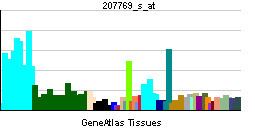Entrez 10084 | Ensembl ENSG00000102103 | |
 | ||
External IDs MGI: 1859638 HomoloGene: 4172 GeneCards: PQBP1 | ||
Polyglutamine-binding protein 1 is a protein that in humans is encoded by the PQBP1 gene.
Contents
Polyglutamine binding protein-1 is a highly conserved nuclear protein expressed in mesodermal and nuclear tissues. The molecular roles of PQBP1 in embryonic development are still being understood, but it has been found to function in mRNA splicing, and transcription regulation. Mutations in the PQBP1 gene, which encodes for this protein, have been known to cause X-linked intellectual disabilities (XLID), commonly referred to as Renpenning's syndrome. People who suffer from these disabilities share a common set of symptoms including: microcephaly, shortened stature and impaired intellectual development. There are 11 types of mutations that have been identified, but the most common being frameshift mutations. A knockdown model of the gene in mouse embryo primary neurons revealed a decrease in splicing efficiency and resulted in abnormal gastrulation and neuralation patterning. Attempts at creating both PQBP1 mouse knockout or over expression models have been unsuccessful, often with lethal results. Research indicates that in order to appropriately function, the protein must be expressed within a critical range.
Function
PQBP1 is a nuclear polyglutamine-binding protein that contains a WW domain (Waragai et al., 1999).[supplied by OMIM]
Interactions
PQBP1 has been shown to interact with:
